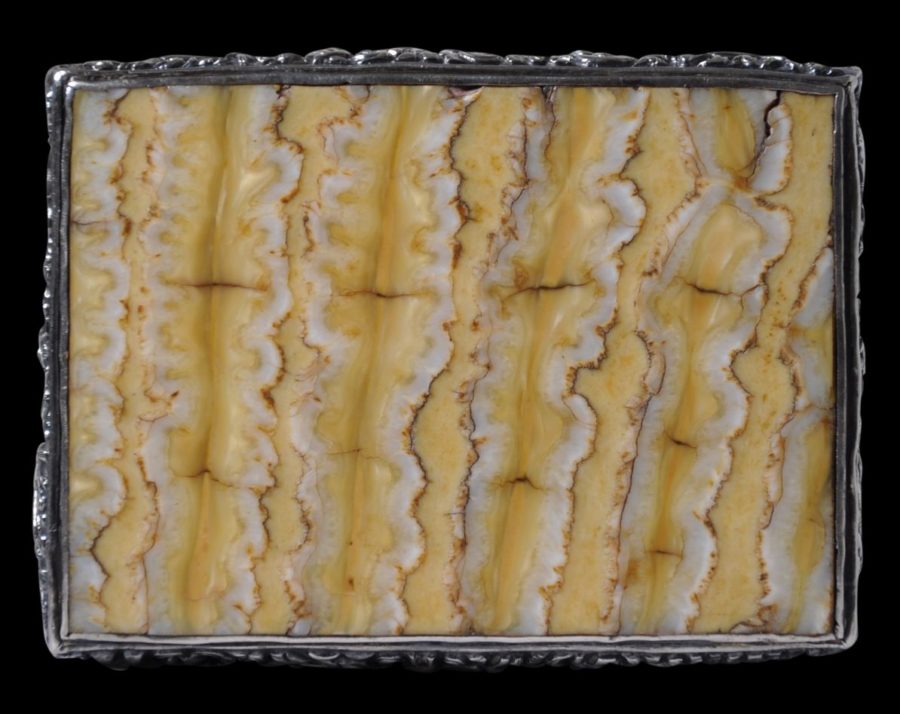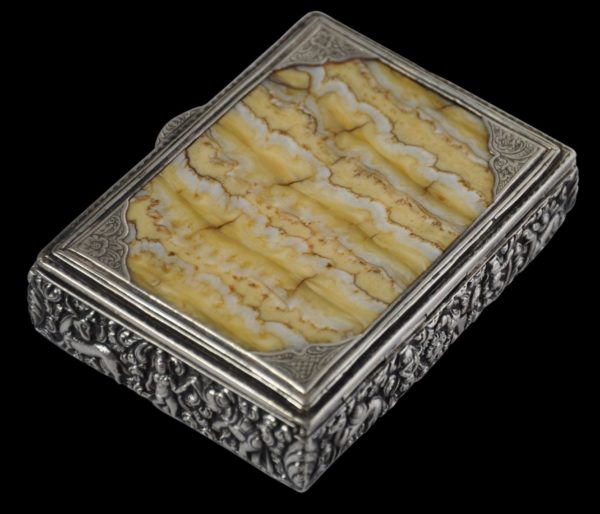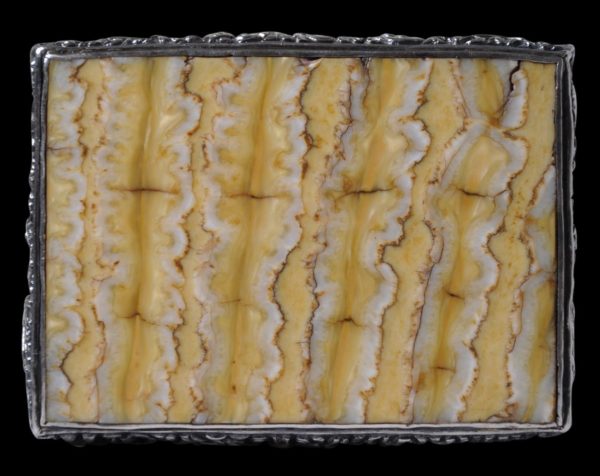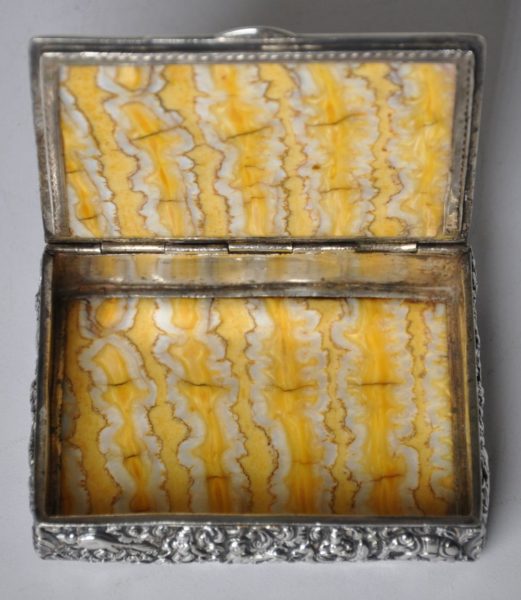A Case of Mistaken Identity: Elephant Teeth


It is extraordinary the number of times auction houses, museums and others mistake elephant tooth for mammoth ivory, fossilised ivory, and any number of other permutations.
The silver snuff box shown here is from Trichinopoly, in South India, and dates to around 1880. It is inset with flat panels taken from the molar tooth of an elephant.
It is NOT mammoth ivory! Probably the idea that this is mammoth ivory has crept in because the agate-like layers of the tooth look like the rings of fossilised wood.
Mammoth ivory almost never makes an appearance in South Asian or Southeast Asian art, whereas elephant teeth were used across the region. In Sri Lanka, for example there were used to make Buddhist reliquaries shaped like stupas or dagobas, and in Indonesia sometimes they were used to make kris handles.
Elephants have four molars, with a molar located in each jaw. The molars of mature elephants can be around 25cm long and weigh as much as 3.6 kg. Typically, an African elephant will go through six sets of molars in a lifetime. The teeth are shed naturally in the way that human children lose and then grow new sets of teeth. This means that elephants do not have to die for their teeth to be available for use in items such as the snuff box here, unlike the case with elephant ivory tusks.
– Receive our monthly catalogues of new stock, provenanced from old UK collections –



